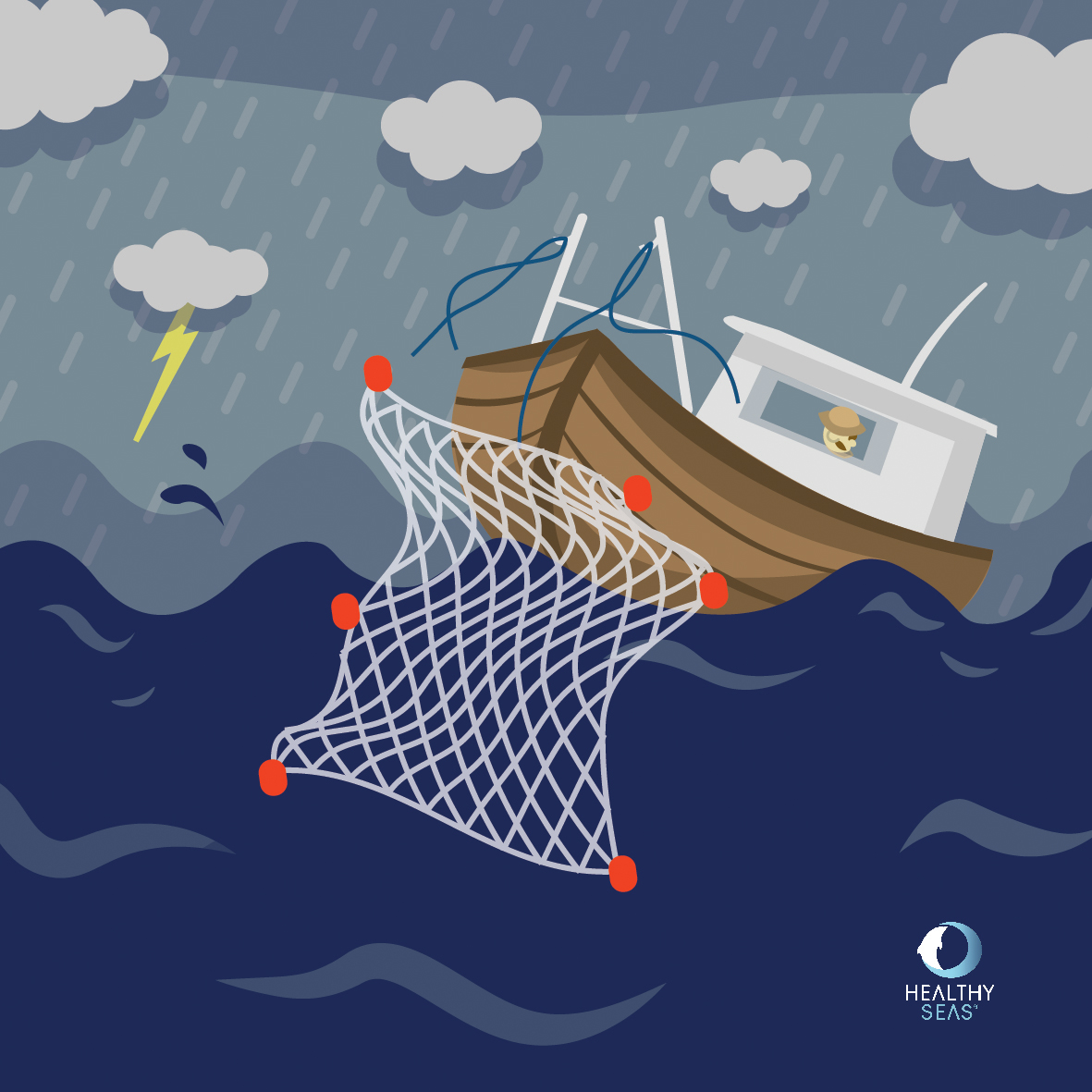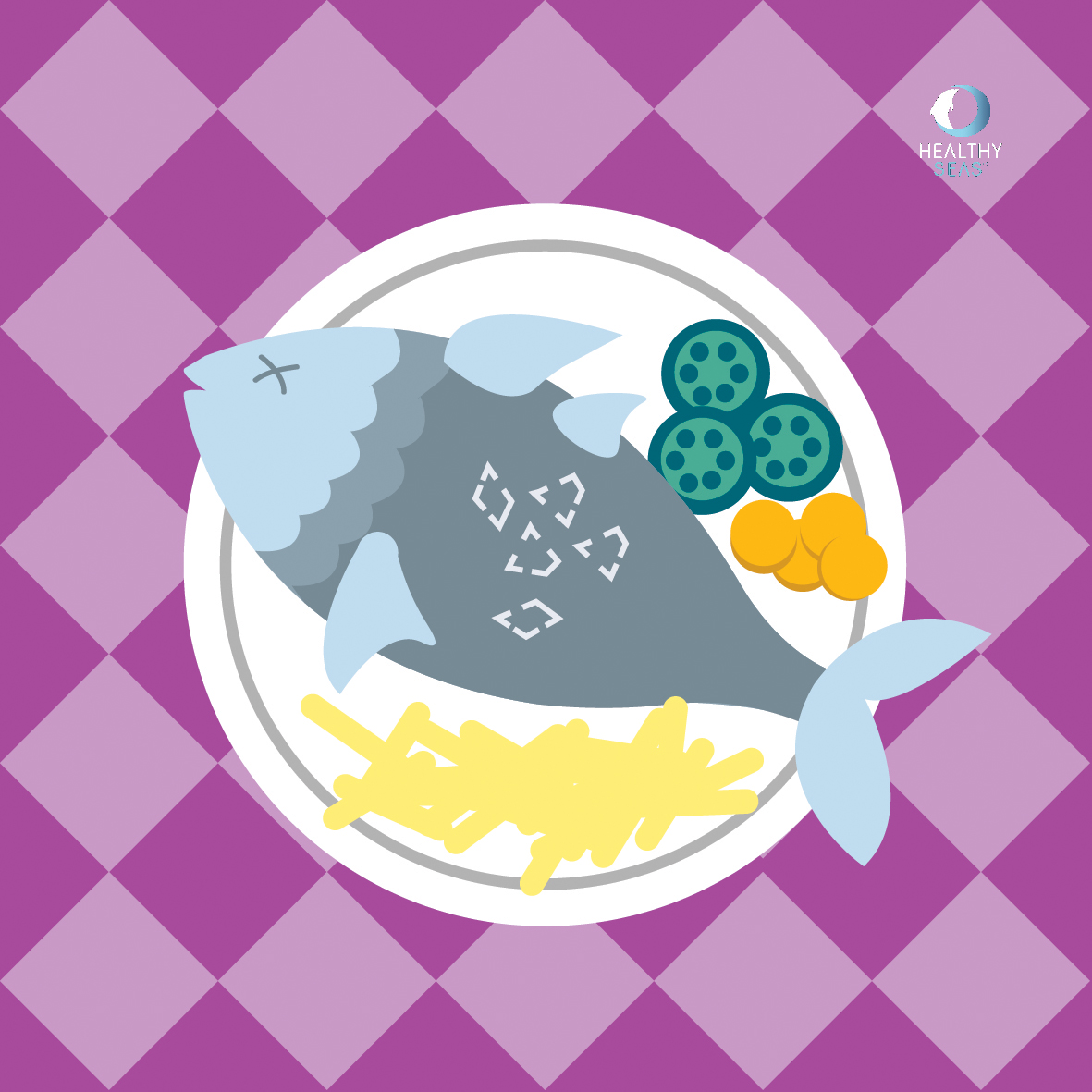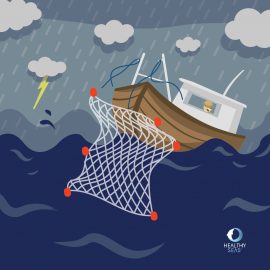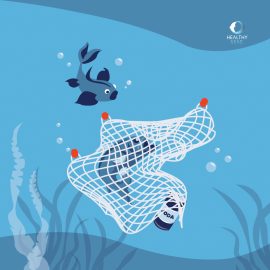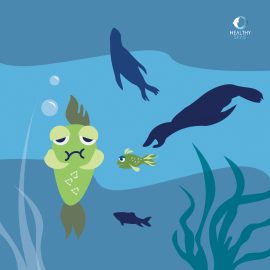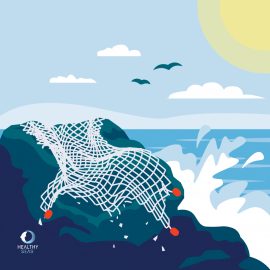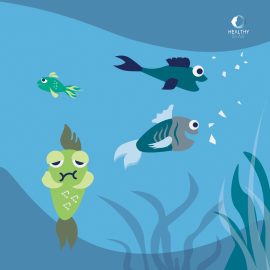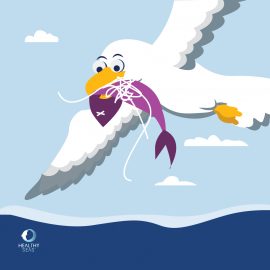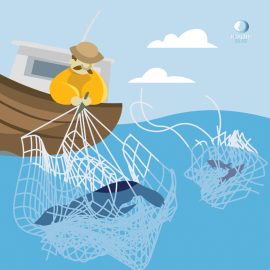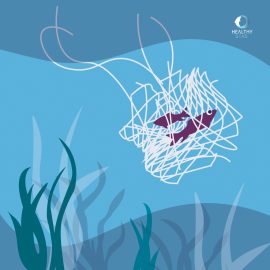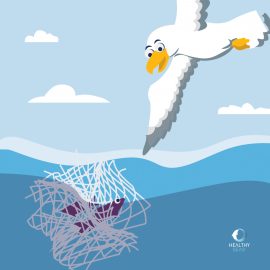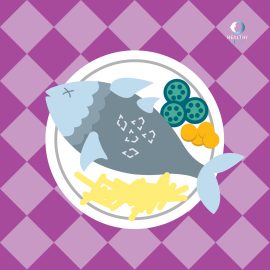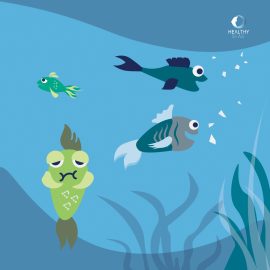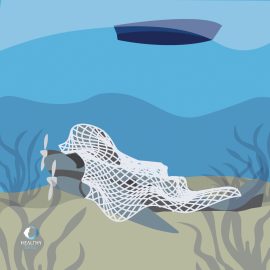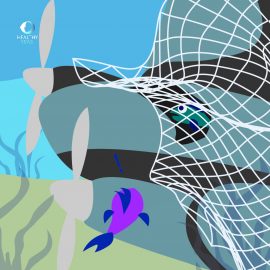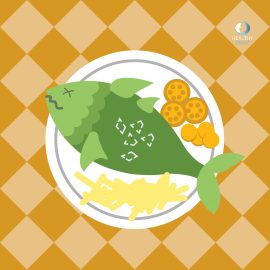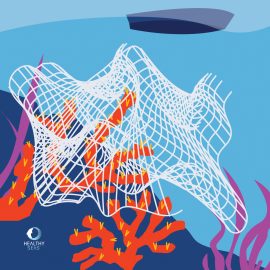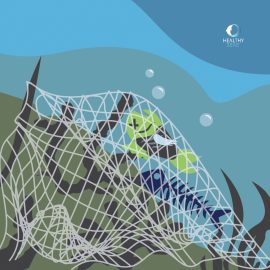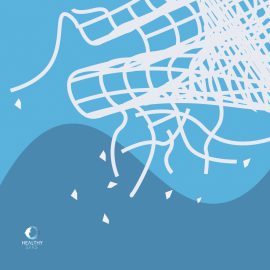A fun game to play with your kids while teaching them about ghost nets!
Instructions: Each team is given a set of cards. Each card illustrates an event leading to fishing nets becoming ghost nets. Each team is asked to put the cards in order and narrate the events that take place before and after the nets were lost.
Learn about the issue:
1. What are ghost nets?
Ghost nets are fishing nets that have been lost, or abandoned. These nets then float around in the sea, or they end up attached to a rock or other structure. This poses a problem, because the nets continue working. Fish and other animals get caught, and then starve, or die of other causes. Since most nets use plastic, they take a long time to decompose and in the mean time lose tiny fragments, called microplastics.
2. Why is it important to stop ghost fishing?
One of the most horrific impacts of ghost fishing is called the cycle of death. Fish and marine animals get trapped in ghost nets, attracting larger animals that want to feed on them and then they also get trapped in the ghost nets continuing the cycle.
Most fishing nets are made of plastic which does not decompose and stays in the sea forever, slowly losing tiny particles, called microplastics, which end up in the stomachs of fish and eventually ours.
3. What are the biggest challenges to getting lost fishing gear out of the water? How do divers overcome them?
Once fishermen lose their nets in the sea, they can be removed is by highly skilled technical divers who are trained to do this dangerous job. Unpredictable weather conditions, low visibility, deep waters but also high costs for filling the gas tanks, travel expenses and also boat hiring are some of the challenges. The regulatory framework differs in every country so for any initiative like Healthy Seas, that operates on an international level, this is also an obstacle.The divers are very well trained, obey a strict protocol and operate as a team to perform their job safely and successfully. The other challenges described above are overcome by being well prepared and organised and by having reliable local partners.
4. How can kids help with the problem?
Nowadays, children’s voices are becoming louder and stronger against climate change. The foundation of this growing movement is education. Healthy Seas teaches children about marine litter and recycling while our overall goal is to inspire kids to love and protect the seas and marine life because education is humanity’s strongest weapon to overcome any issue, including those harming the planet.
“In the end we will conserve only what we love; we will love only what we understand; and we will understand only what we are taught.” ~Baba Dioum, 1968



